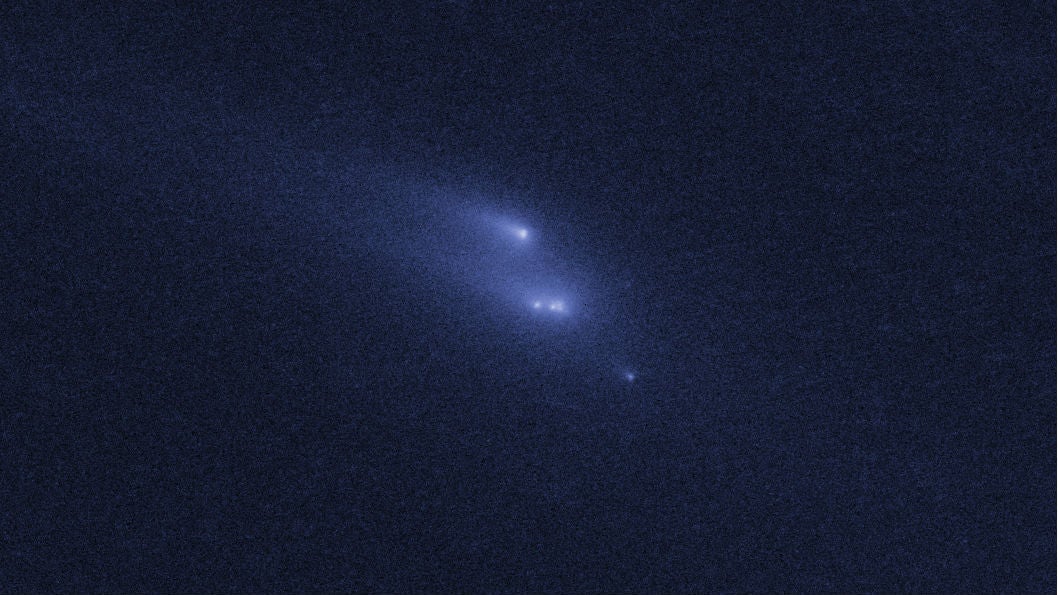How to watch the asteroid that’s about to get closer to Earth than the moon
Another day, another close encounter with a flying space rock.


Another day, another close encounter with a flying space rock.
Starting around 12:30 am eastern time on Friday, March 2, asteroid 2018 DV1 will be visible as a tiny dot of light whizzing by the Earth. The asteroid, which is about 23 feet across (about as wide as an orca is long), will come as close as 70,000 miles (113,000 km) to Earth. For context, the moon is more than three times that distance from Earth, circling the planet about 238,900 miles away.
Astronomers at Mount Lemmon Observatory in Arizona spotted 2018 DV1 earlier this week. Coincidentally, its appearance will come less than a week after DU2018 zoomed past Earth about 175,000 miles away.
Asteroids are fairly common, and generally innocuous. Technically, 2018 DV1 is classified as “potentially dangerous,” but NASA uses that term rather liberally: Anything that is more than 492 feet wide and occupies an orbit that approaches within 4.6 million miles of our planet. To date, there have been 17,774 “near-Earth” asteroids recorded, and none of them have given us much trouble. The record, though, only goes back to 1900, and so doesn’t include the asteroid that struck Earth some 66 million years ago, and sped up the extinction of dinosaurs.
If asteroids do come within our atmosphere, they’re usually traveling so fast they burn up, sometimes explosively, although still far away enough in the sky to not do too much damage. (Every once in a while, an asteroid will make it through and reach the ground; whatever remains is called a meteorite.)
You can watch 2018 DV1 on a live web stream freely available from the Virtual Telescope Project, which is run by Gianluca Masi, an astronomer at the Bellatrix Astronomical Observatory in Italy.